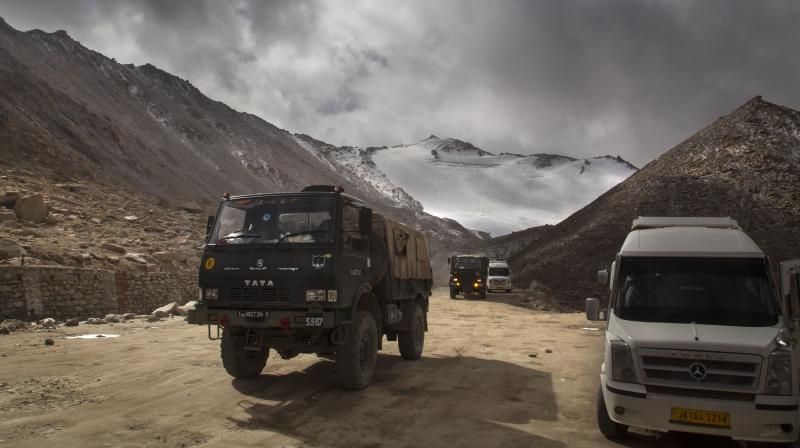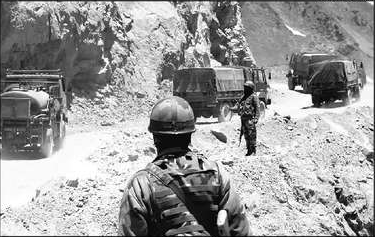Claude Arpi | India vs China: Time to open some new fronts
This history shouldn’t be forgotten when one looks at the present events in Ladakh, though “establishmentâ€, says that nobody should worry

www.deccanchronicle.com
On July 12, 1962, India’s first Prime Minister Jawaharlal Nehru landed at Delhi’s Palam airport; he was back from a family holiday in Kashmir. The National Herald described the scene thus: “Pandit Nehru returned by a special plane from Kashmir after a week’s holiday. He was accompanied by Mrs Indira Gandhi, Mrs Vijayalakshmi Pandit and his two grandsons. The Prime Minister was looking better after the rest.
“The presspersons literally jumped on the Prime Minister: Chinese troops had encircled an Indian picket in a remote unknown place of Ladakh, the spokesman of the external affairs ministry had just told them: ‘There has been no change in the situation caused by encircled Indian post in the Galwan river valley in Ladakh by Chinese intruders’. But the Prime Minister was cool: ‘No conflict had occurred so far between the Indian and Chinese personnel at the Galwan outpost in Ladakh’.”
The tendency to minimise Chinese intrusions is nothing new; that day at the airport, Nehru explained “some time or the other the Chinese will have to end their encirclement of the Indian outpost to avoid an armed clash”.
A correspondent dared point out that according to the latest Indian protest note the situation was serious, and the PM agreed. “Yes. They are pitched in a high key. Anyhow, so far as I know, nothing has happened, no conflict has occurred,” he said, adding: “Some time or the other the [Chinese] will have to [end the encirclement].”
Nehru was cheerful, and even joked as the correspondents trooped around him, laughingly asking: “Are you now encircling me?”
Two days later, before leaving for Bengaluru, Nehru again told the press: “While there was a risk of a clash between Indian and Chinese forces at Galwan post in Ladakh, I don’t think there will be any major clash.” He then added: “They accuse us and we accuse them. It’s very difficult to say what will happen… There is a risk of a clash, but not a major one.”
The MEA annual report explained India’s position: “In July 1962 Chinese troops encircled an Indian post in the Galwan Valley, [the Indian government has] indicated their willingness to enter into discussions on the India-China boundary question… as soon as the tensions have eased and a suitable climate for talks and discussions is created”. The Chinese troops eventually withdrew from the area.
This background appears interesting as one looks at the present situation in Ladakh, where PLA troops are facing the Indian troops in a similar manner.
The summer 1962 incident sent a false message to the government, and particularly to arrogant defence minister V.K. Krishna Menon, who was on his way to Geneva to meet Marshal Chen Yi, China’s foreign minister; but it made many Indian officials, including then Intelligence Bureau chief B.N. Mullick, believe the Chinese would never attack, or if they did it would be a minor clash.
We know what happened three months later, when a totally unprepared Indian Army had to face the onslaught of the Chinese PLA.
This history shouldn’t be forgotten when one looks at the present events in Ladakh, though today’s “establishment”, like yesterday’s, says that nobody should worry and the issue will be sorted out through negotiations (today it’s called “mechanisms”). But the issue may not vanish that fast.
Ambassador R.S. Kalha, in his book India-China Boundary Issues, has recalled: “Nehru seemed to be convinced that the Chinese would not make any major incursion into Indian-held territory. Perhaps Krishna Menon convinced him so. Nehru told Gen. Thapar (Army Chief) that he had ‘reliable information that the Chinese would not offer resistance if there was a show of force to make them vacate the checkposts’. The events in the Galwan Valley seemed to confirm Nehru’s thesis, when Chinese troops advanced right up to the Indian post, surrounded it, but did not open fire and eventually withdrew.”
The ambassador added: “This was not the message the Chinese wished to convey. They intended it as a warning that they could eliminate any Indian post at any time, but Nehru misread it and reached the opposite conclusion that China would not fight.”
Galwan remained quiet till October 20, the day the PLA launched a massive attack; as a result, 36 Indian soldiers were killed and another 32, mostly wounded, were taken prisoners in Tibet.
Maj. Gen. P.J.S. Sandhu, editor of the fascinating study 1962: A View from the Other Side of the Hill, recently remarked: “Unlike in NEFA, the Chinese did not withdraw even an inch in Ladakh. They stayed put where they had reached: their 1960 Claim Line. In Ladakh, they had claimed about 33,500 sq km of Indian territory; by the end of the war, they had taken control of most of it, except about 450 sq km of area which remain till today as a few disputed pockets.”
What makes the present situation extremely serious is that in Ladakh, while there are 12 “disputed” areas along the Line of Actual Control (LAC), where China’s and India’s “perceptions” differ, the area where the conflict is now taking place was not one of them. In Galwan, the LAC “perceptions” were similar till the beginning of May, when the PLA started planting tents in the area.
What seems obvious is that the PLA’s objective is to block infrastructure construction on the Indian side, regardless of whether they have ever claimed the area before or not.
The question remains: Why has China always refused to inform India of its “perceptions” of the LAC?
In 2000, both sides agreed they would initiate a process for the clarification and determination of the LAC in all sectors; a first meeting took place in March 2000, where maps of the middle sector were exchanged.
On June 17, 2002, both sides met again and maps of the western sector were seen by both sides for about 20 minutes, but during the meeting itself the maps were withdrawn since it was felt that they represented maximalist positions for both sides.
In these circumstances, it is high time for India to not only insist on the immediate exchange of maps of the LAC, but also to select a few points of pressure which could be painful for Beijing – such as Tibet, Taiwan or Hong Kong -- and if necessary, to start applying pressure.






